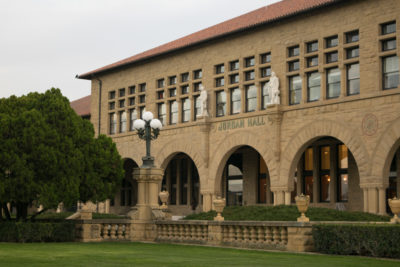Dozens of professors from Stanford’s science, engineering and humanities departments have come together to launch the Center for Open and REproducible Science last week, an initiative that seeks to increase the transparency, reproducibility and openness of science.
The Center, also known as CORES, is encouraging early adoption of open science practices at Stanford, which include data sharing and study pre-registration. Eventually, it hopes to become the “gold standard” for open science, a fundamental shift that makes science more inclusive by emphasizing accessibility and dissemination of data, methods and tools, rather than just results.
The implementation of CORES was motivated by recent incidents of irreproducible research, according to Russell Poldrack, professor of cognitive neuroscience who serves as the project’s director. In the field of psychology for example, Poldrack said the field has faced a “replication crisis” in the last decade, as the findings of important studies could not be reproduced by peer scientists. Scientists have also questioned the methods — and lack of transparency surrounding them — of famous psychology experiments like Stanford’s prison experiment and Yale’s Milgram experiment, which both made sweeping claims about humanity’s propensity for violence that have been largely disproven.
Psychology isn’t the only field facing these challenges. Steven Goodman, associate dean of clinical and translational research, explained that medicine underwent a similar reckoning, when national clinical trial data was found to be misleading. In response, Goodman cofounded the Meta-Research Innovation Center (METRICS) in 2014, pioneering a novel effort to study the reliability of medical research. According to Goodman, however, CORES picks up where he left off, as his team “didn’t focus on changing Stanford.”
Now, Stanford researchers across disciplines appear ready to establish broad-based changes to research methodologies.
“The biggest barrier to open science is not that scientists don’t want to do it”; rather, it’s that “many simply don’t know where to start or lack the technical skills to do so,” Poldrack said.
To help researchers incorporate the principles of open science, to the new model of science, Poldrack has formed a team of professors from every corner of the University, ranging from fields marine science to econometrics to philosophy. He hopes that his team will serve as “an army of open science evangelists,” working to incorporate ideas from open science into their own fields.
In addition to established researchers, CORES is also recruiting young scientists.
Shilaan Alzahawi, Ph.D. ’23 in Organizational Behavior at the Graduate School of Business described her excitement at what she calls a “grassroot movement.”
“As the newest generation of scientists — current undergrads, masters students and graduate students — we can basically change the way science is done,” Alzahawi said. She joined the initiative after witnessing a scientific crisis in her home country, the Netherlands, where a prominent researcher was caught faking data in over 60 major publications.
Endeavoring to prevent these scientific scandals from occurring in the future, and to promote the quality of science generally, Alzahawi, Poldrack, Goodman and others are developing strategies to not only make science more open, but also incentivize researchers to practice open science.
For example, Alzahawi is helping to develop innovative resume templates which showcase elements of open science practices, such as whether data and code were shared, rather than just final results and citations. She believes that showcasing researchers’ efforts towards open science will incentivize more academics to join the movement.
The CORES initiative is an umbrella for much more. Data sharing, code sharing, study pre-registration and tenure policies are all key focus areas for Poldrack’s team.
According to Goodman, Stanford is one of the few leading the open science movement. Eventually, he hopes that the initiative influences science across the globe, with researchers consulting an “Open by Design at Stanford” guide, changing the way science is done at Stanford, and beyond.
